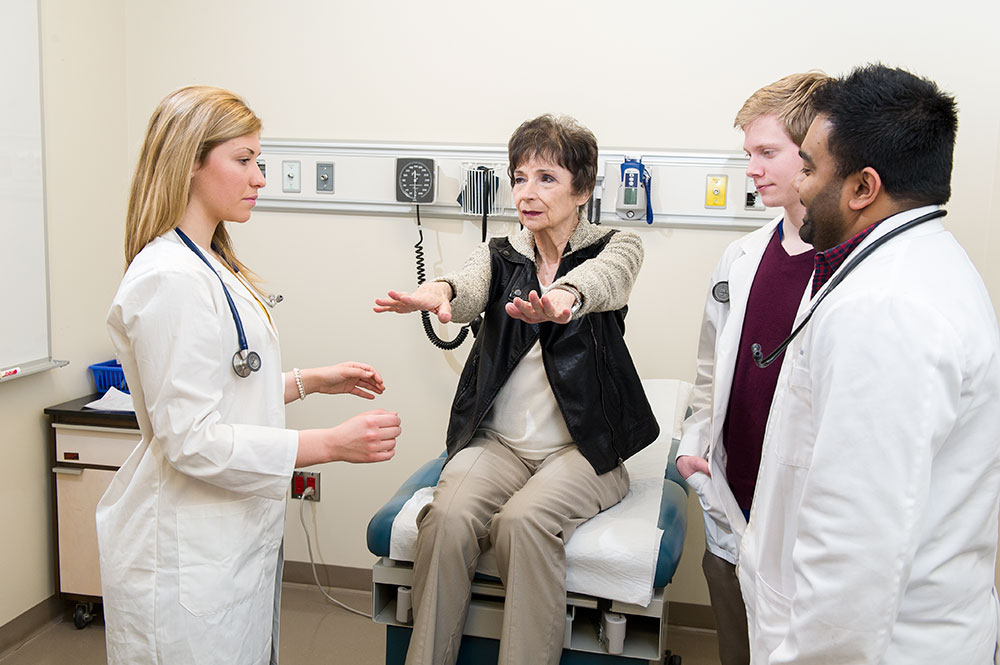Standardized Patients

Standardized Patients (SP) Program
Standardized Patients (SPs) are generally healthy people who have been carefully trained to realistically reproduce the history, physical, and emotional findings of an actual patient. This gives health care learners valuable practice in the "art and science" of interviewing, therapeutic communication and/or physical examination skills. They also offer a readily available and standardized tool for education and the evaluation of student performance.
Standardized Patients can be used:
- For role playing - students learn to talk to patients about a variety of topics ranging from simple conditions to more complex issues
- As a teaching tool for students to learn and practice physical examination skills
- To provide effective feedback to learners from the patient’s point of view
- To participate in assessments for medical learners
SPs are trained to simulate patients; however, students also learn from Teaching Patients, who are people with complex medical conditions that are stable.
More than 300 standardized patients participate in the SP program. They come from varying backgrounds, and range in age from infants to seniors! No formal acting experience is necessary to become an SP.